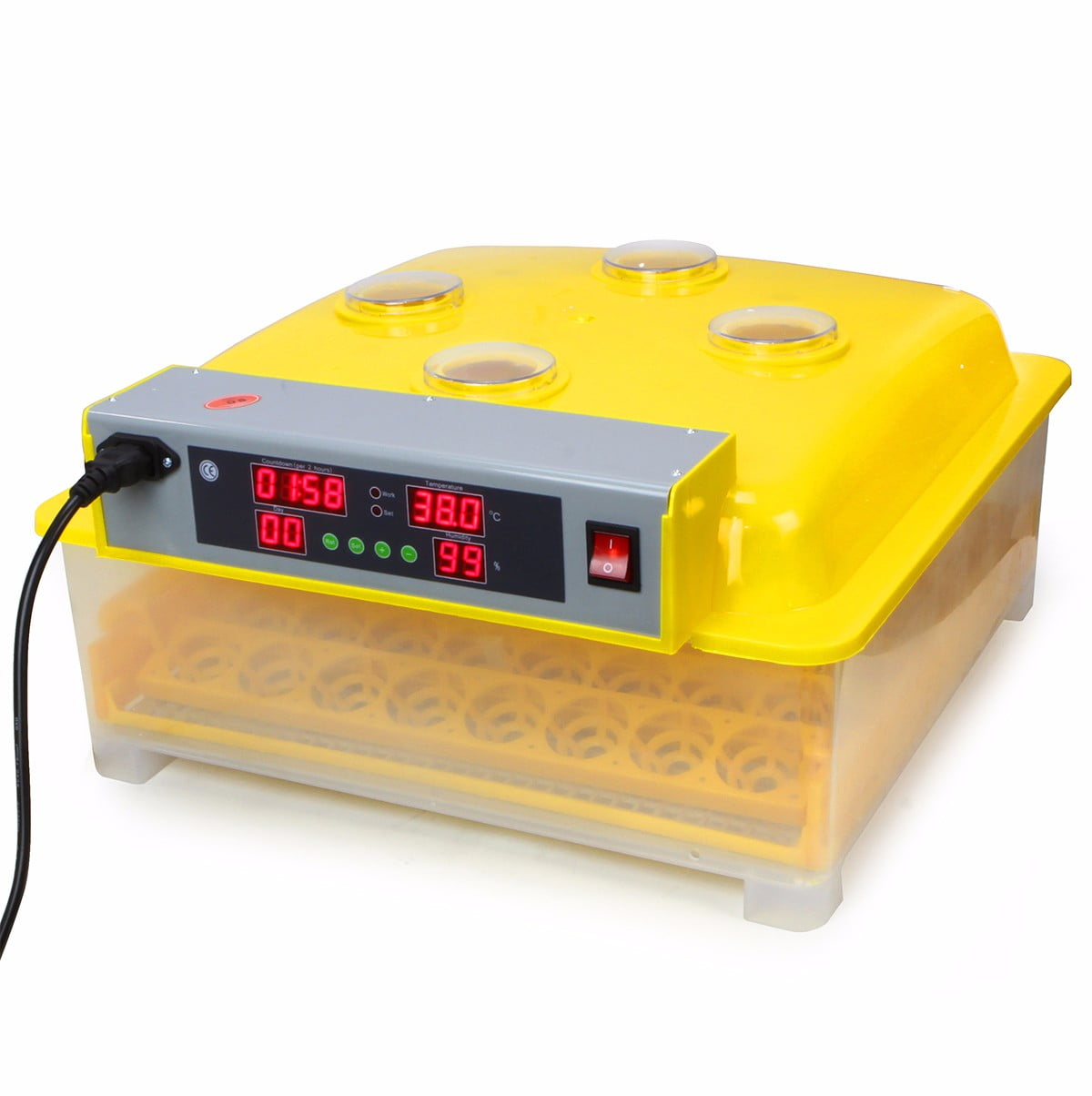

Covering the incubator could prevent proper ventilation or insulate the incubator and cause it to become too hot. Even though you want the incubator dark, don’t cover the incubator with a towel or blanket. Large cabinet incubators are usually dark inside anyways since they have little to no windows. This is especially important if you have an incubator that has a clear viewing window for watching the hatch. When chicks hatch under a mama hen, it is dark under her feathers which discourages movement and prevents pecking.

It is helpful to keep the incubator in a dark location during hatch time.

They may be curious and start pecking at a pip or at a newly hatched chick. However, sometimes hatched chicks can be rough on the other eggs. This is what naturally occurs when a broody hen hatches chicks. Leaving hatched chicks in the incubator while other eggs are still hatching actually encourages the chicks who are still inside the eggs to pip and hatch. However, it is best for a chick to start eating and drinking as soon as possible and ideally within 48 hours of hatching. A chick can survive on the nutrients from the egg yolk for up to 3 days. Prior to hatching, a chick will finish absorbing the egg yolk within the egg. Chicks can safely stay in the incubator for up to 48 hours after hatching. While it may be tempting to remove the hatched chicks as soon as possible, it is important to have patience through the fluffing out period. Once all the chicks have fluffed out, you can move them to the brooder where they should have food, water, and a heat source! How Can Chicks Survive in the Incubator? Proper humidity levels will help the hatched chicks fluff out quickly but also prevent the unhatched chicks from becoming trapped from a dried out shell membrane. The ideal hatching humidity range is between 65-70% humidity. However, you also want the humidity to be high enough that the shell membranes don’t dry out as chicks hatch. When a chick’s down feathers don’t fluff out in time, the chick could become too chilled and die. If the humidity is too high, the down feathers won’t dry as fast. Humidity & Fluffing OutĮnsuring that the proper humidity levels are maintained during the hatch is important for helping chicks fluff out in a timely manner. All the chicks must be dry and fluffed out before you move them to the brooder. ‘Fluffing out’ refers to allowing a chick’s down feathers to dry and become fluffy. You need to wait until the last chick to hatch has had time to fluff out. Just because all the chicks have hatched, that doesn’t necessarily mean you can move all the chicks to the brooder right away. If the chick is removed from the incubator too soon, it can easily become chilled and die. However, the damp down feathers must dry out before the chick can be removed from the incubator. The dampness is essential for helping the shell membrane not dry out as the chick is hatching ( proper hatching humidity is essential too). When a chick hatches, its down feathers will be damp from the moisture within the egg. There may be big breaks between the time the chick pips the eggshell and when it finishes unzipping to hatch, but all the chicks should hatch within a reasonable amount of time from each other. Due to this higher temperature the embryos will develop relatively fast and the total incubation time might increase less than the mentioned 30-40 minutes per gram of egg.During a normal chick hatch, all the eggs that have developed should pip and hatch within 24-36 hours. Often bigger eggs are getting warmer during incubation, as the size of the eggs block the air flow over the eggs, and with that limited air flow the heat transfer is less and the eggs are getting warmer.

This has to do with the fact that the embryos in these eggs at moment of lay are slightly behind in development (more in the pre-gastrula stage than in the gastrula stage) and need more time to complete the incubation process. Young breeder flocks (broiler breeders younger than approximately 32 weeks) produce small eggs that are hatching relatively late. There are some factors that can influence this relation between egg weight and incubation time. So when the average egg weight of a flock increases from 65 to 70 g, we need to set the eggs approximately 2.5 hours earlier if we want to pull the chicks at the same moment. Bigger eggs need more total incubation time, as at the same egg shell temperature the embryo will grow at more or less the same rate, but as there are more grams of egg and grams of final chick, it will take longer to hatch.Ī rule of thumb is that with an increase of the average egg weight of 1 gram, the total incubation time is extended with approximately 30 to 40 minutes. The size of the egg has an influence on the time the embryo needs to grow to fill the shell and with that on the hatch time.


 0 kommentar(er)
0 kommentar(er)
